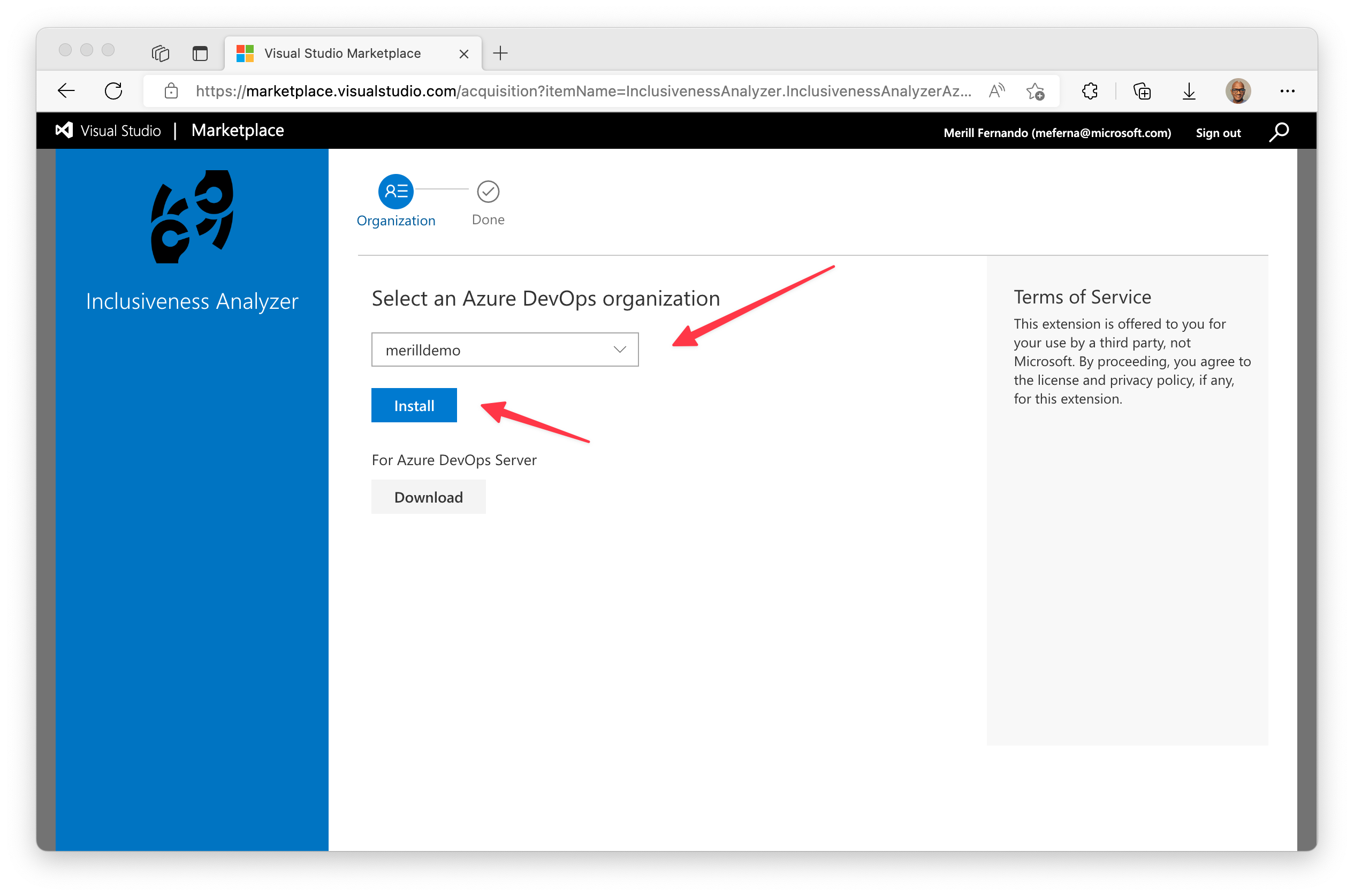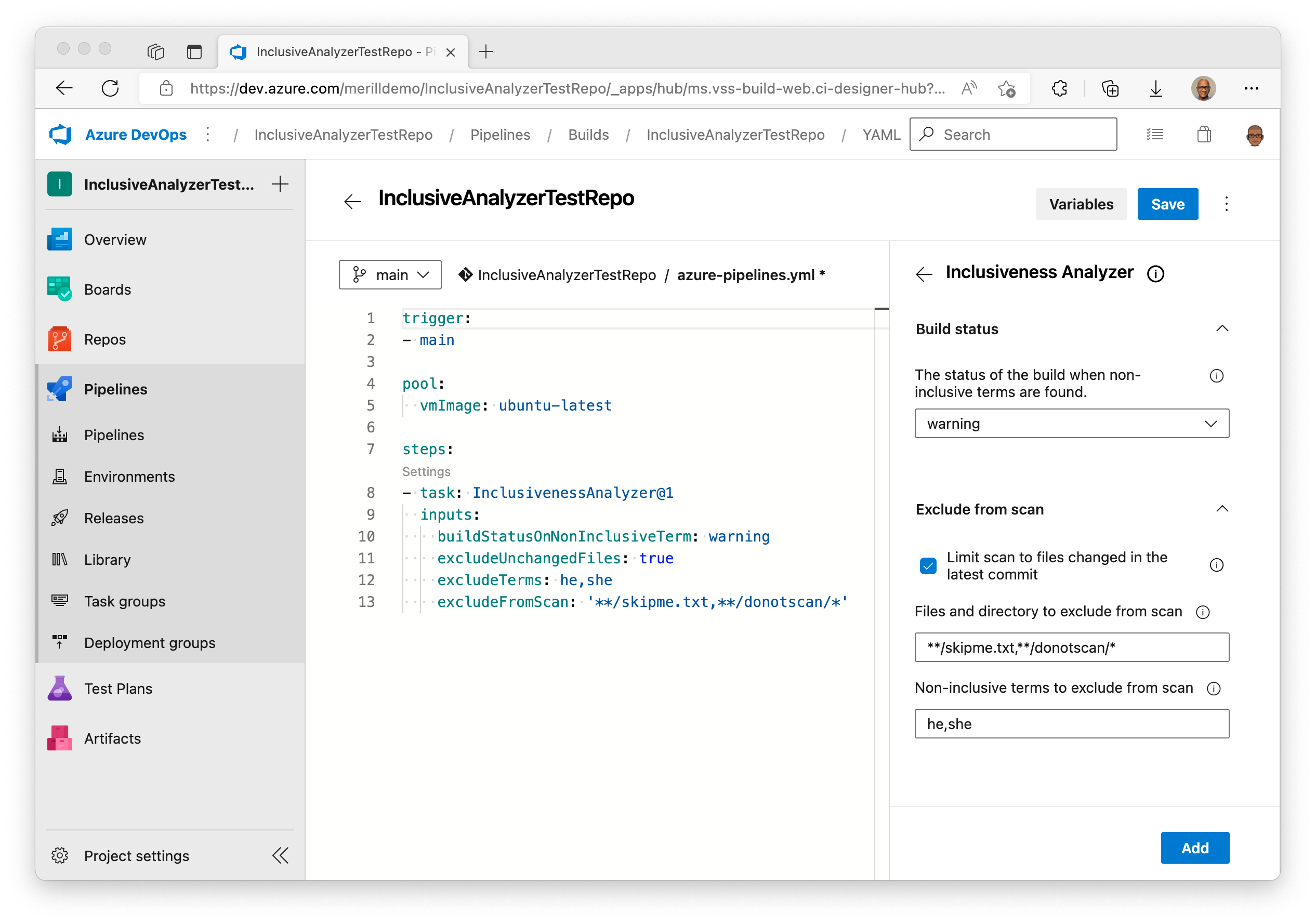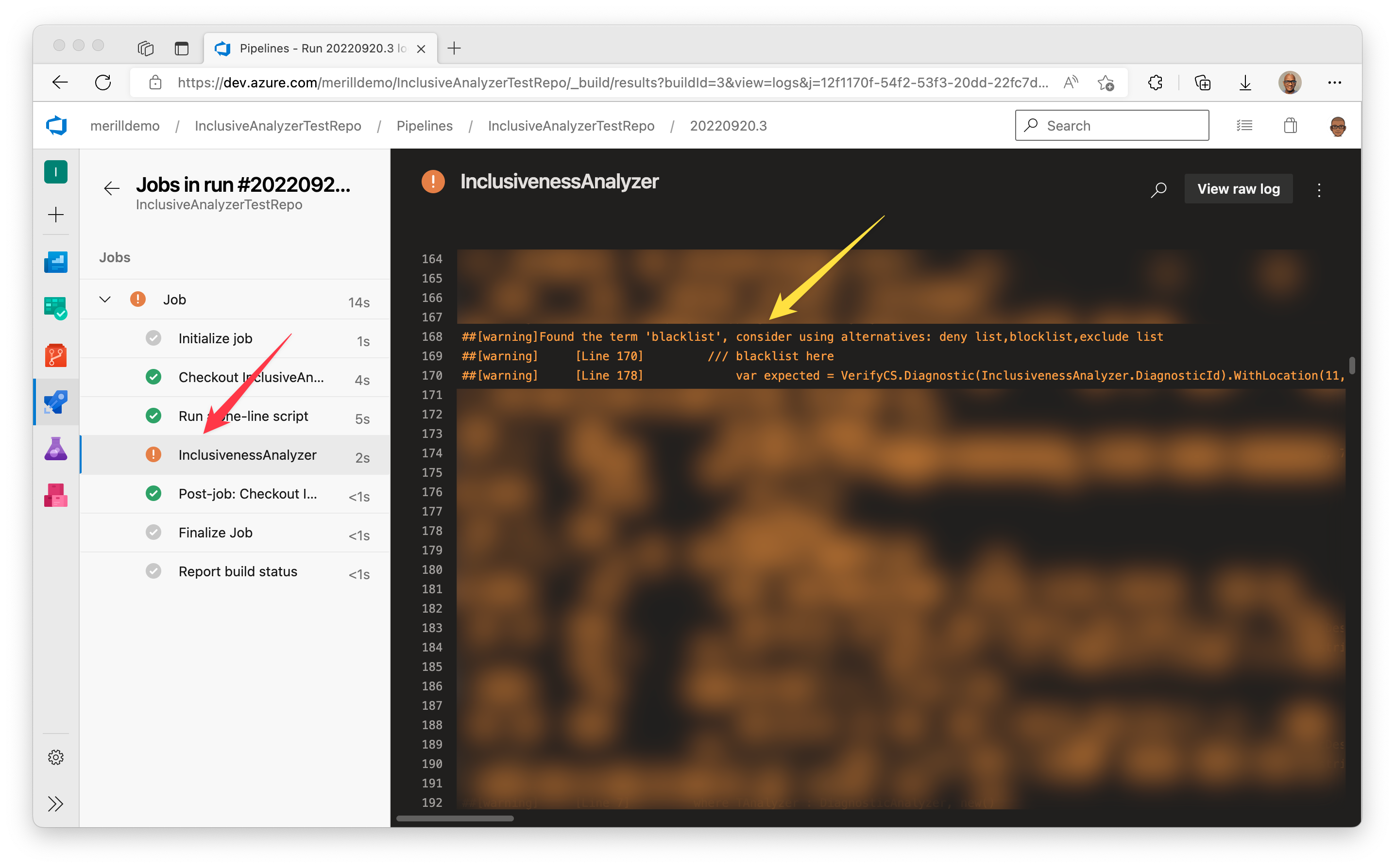Learn how to add the Inclusiveness Analyzer extension to your Azure DevOps Organization and benefit from the automated detection of non-inclusive terms that could make their way into your application and your docs.
How it works
This Azure DevOps extension provides a build task that you can add in your build definition. You’ll benefit from the automated detection of non-inclusive terms that could make their way into your application and your docs.
- View and install Inclusiveness Analyzer from the Visual Studio Marketplace
- Provide feedback and report issues
Install Inclusiveness Analyzer
- Browse to the Inclusiveness Analyzer Visual Studio Marketplace page.
- Select Get it free

- Select your organisation from the list and select Install

Add Inclusive Analyzer task to your build pipeline
Once you have installed the extension in your organization you can use it in any of the organization’s Build pipelines.
- In your Azure DevOps project browse to Pipelines and either add or edit a Pipeline.
- Search for Inclusiveness Analyzer from the Tasks pane on the right.
- Customize the options if needed and select Add

- Run the pipeline and view the output generated by the Inclusiveness Analyzer step.

Task control options
Use the options below to configure exclusions and build state when non-inclusive terms are found in the repository.
buildStatusOnNonInclusiveTerm
Status of the build when non-inclusive terms are found.
Options:
warning(Default) - Build completes with a warning state.failed- Breaks the build if non-inclusive terms are found.success- Build completes successfully
excludeUnchangedFiles
If true (Default) limits the scan to files changed in the latest commit. If false a full scan is run on each commit.
| The git checkout step needs to have at least ‘with: fetch-depth: 2’ configured. |
excludeFromScan
Comma separated list of file patterns to exclude from analysis. Glob patterns are supported with a prefix of **/
Eg. **/skipme.txt,**/donotscan/*
excludeTerms
Comma separated list of non-inclusive terms to exclude from analysis.
Eg. he,she